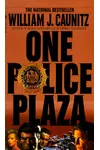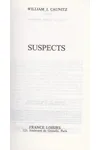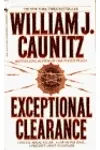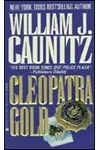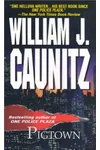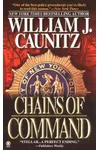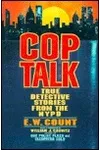Picture a New York City cop turned storyteller, spinning gritty tales from the precinct’s front lines—meet William J. Caunitz! This former NYPD lieutenant traded badges for bestsellers, crafting police thrillers that pulse with authenticity and suspense. His debut, One Police Plaza, hooked readers with its raw depiction of urban crime, earning him comparisons to legend Joseph Wambaugh.
Caunitz didn’t just write stories; he lived them. With 30 years on the force, his novels offer a front-row seat to the chaos and camaraderie of police life, blending procedural precision with heart-pounding drama. Let’s dive into the life and legacy of this thriller titan!
The Making of William J. Caunitz
Born on January 25, 1933, in Brooklyn, New York, William J. Caunitz grew up with music in his blood—his father was a professional pianist. After graduating from Erasmus Hall High School, he served in the U.S. Marine Corps from 1949 to 1953, then worked briefly as an insurance map clerk before joining the NYPD in 1955. Starting as a patrolman, he climbed the ranks to lieutenant and detective squad commander, all while earning a bachelor’s degree from City College and a master’s in history from Hofstra University in 1972.
His writing career sparked unexpectedly in 1974 at a party, where Harcourt Brace editor Tony Godwin urged him to pen his “war stories.” After a decade of nighttime writing while working Queens’ prostitution detail, Caunitz retired from the NYPD in 1984 to focus on his craft, launching a new chapter as a novelist.
William J. Caunitz’s Unforgettable Stories
Caunitz’s novels are a masterclass in police procedurals, infused with the grit and soul of New York’s streets. His debut, One Police Plaza (1984), follows a detective uncovering a conspiracy involving Israeli security and Muslim extremists, inspired by real homicide cases Caunitz worked. It became a TV movie starring Robert Conrad in 1986, with a sequel, The Red Spider, in 1988.
His second novel, Suspects (1986), dives into a Brooklyn double murder, trailing Detective Lt. Tony Scanlon through a web of corrupt cops. Adapted into David Mamet’s 1991 film Homicide, it showcases Caunitz’s knack for flawed, compelling characters. Black Sand (1989) pairs a New York cop with a Greek officer chasing an ancient artifact, while Cleopatra Gold (1993) tackles a heroin syndicate with cinematic flair. His final work, Chains of Command (1999), a sequel to Pigtown (1995), was completed posthumously by Christopher Newman after Caunitz’s death.
Caunitz’s style blends meticulous police procedures with thriller elements, avoiding outlines to let plots twist organically. Critics praised his “raw authenticity,” with The New York Times lauding his vivid depictions of ballistics tests and precinct life, making his stories feel like dispatches from the beat.
Why William J. Caunitz Matters
Caunitz bridged the gap between police work and fiction, offering readers an unfiltered look at the NYPD’s inner workings. His novels, grounded in real cases, humanized cops as flawed yet dedicated, influencing the police thriller genre alongside peers like Wambaugh. Fans on Goodreads and Amazon still rave about his page-turners, with One Police Plaza and Suspects earning high ratings for their immersive storytelling.
Though he passed from pulmonary fibrosis in 1996, Caunitz’s legacy endures in his seven novels and their adaptations. His work remains a touchstone for crime fiction lovers, proving that truth—laced with suspense—makes the best stories.
- Born: January 25, 1933, Brooklyn, NY
- Died: July 20, 1996, Sarasota, FL
- Key Works: One Police Plaza, Suspects, Black Sand, Cleopatra Gold
- Notable Adaptation: One Police Plaza (TV movie, 1986)
Snag One Police Plaza or Suspects and dive into William J. Caunitz’s thrilling world of cops, crimes, and New York grit!
